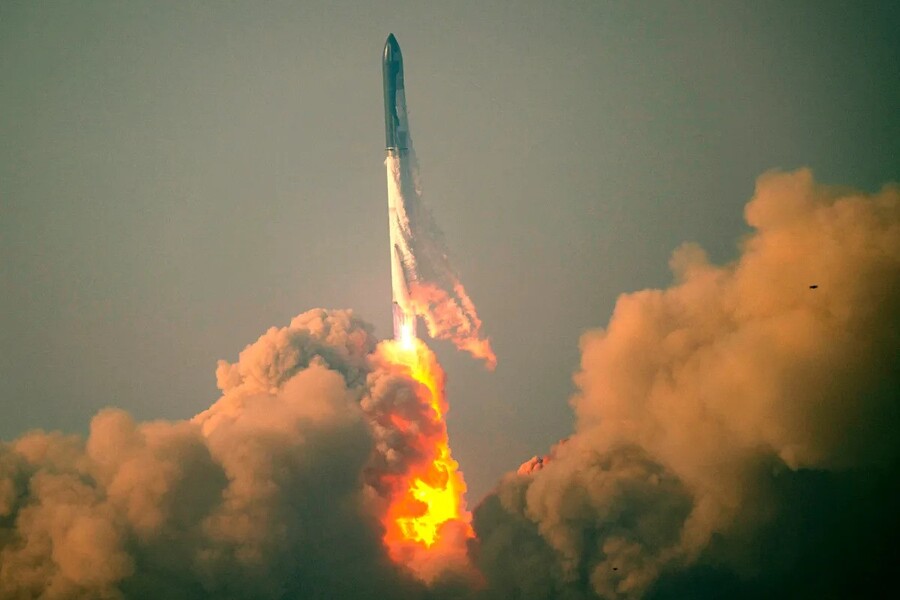The space industry continued its meteoric rise in 2024, marked by a series of groundbreaking advancements, historic missions, and notable challenges. This year showcased the dynamic evolution of space exploration, driven by technological innovation, increased collaboration, and bold private-sector initiatives. Among the most significant moments were milestones achieved by industry giants like SpaceX, ambitious lunar missions by multiple nations and private firms, and the expanding role of defense agencies in supporting space ventures.
One of the most talked-about moments this year was SpaceX’s successful “catch” of the Super Heavy booster, a feat that demonstrated the company’s engineering prowess. SpaceX had already revolutionized rocket reusability with its Falcon 9 series, recovering 367 boosters to date. However, the massive size and complexity of the Super Heavy booster required a completely new approach. In October, during the rocket’s fifth test flight, SpaceX achieved what many had deemed impossible—using the launch tower’s mechanical arms to catch the returning booster. While subsequent tests showed room for refinement, the accomplishment represented a major step forward in making spaceflight more efficient and cost-effective.
Meanwhile, the Polaris Dawn mission highlighted the growing role of private entities in advancing space exploration. Spearheaded by billionaire Jared Isaacman, the mission featured the first-ever commercial spacewalk. Isaacman and SpaceX engineer Sarah Gillis stepped outside their specially equipped Dragon spacecraft to conduct critical tests on SpaceX-designed spacesuits. The event underscored the increasing capabilities of private space companies to undertake complex and hazardous activities traditionally reserved for government agencies like NASA.
NASA faced its own challenges this year, particularly with Boeing’s Starliner spacecraft. Initially slated to be a significant milestone in NASA’s Commercial Crew Program, the Starliner’s first crewed mission was marred by technical difficulties. As the spacecraft approached the International Space Station, a series of malfunctions raised concerns about its safety, prompting NASA to keep the astronauts onboard the ISS and eventually return them to Earth using a SpaceX Dragon capsule. While the Starliner’s safe touchdown was a positive outcome, the setback dealt a blow to Boeing, a company already grappling with significant cost overruns on the project.
The lunar surface remained a focal point for exploration, with a diverse array of participants attempting landings this year. Two private American companies, along with Japan and China, launched missions targeting the Moon. The outcomes were mixed. While China’s Chang’e 6 mission succeeded in landing and retrieving samples from the far side of the Moon, other attempts faced challenges. Intuitive Machines and Japan’s Aerospace Exploration Agency reached the lunar surface but failed to achieve upright landings. Astrobotic’s mission, unfortunately, ended prematurely with an aborted landing attempt. These efforts reflect a renewed global interest in lunar exploration, signaling the beginning of a new era of scientific discovery and competition.
The U.S. Space Force played a critical role in shaping the commercial space industry this year. Acting as one of the largest customers for space services, the Space Force awarded significant contracts to private companies. Notable deals included a $733 million contract with SpaceX for eight launches and a $515 million contract with Rocket Lab for 18 satellites. Emerging defense startups like Anduril and Impulse Space also secured funding for advanced capabilities, including surveillance and rapid response systems. These investments highlight the increasing reliance on private companies to support national security objectives in space.
As the year came to a close, the space industry’s accomplishments underscored the growing synergy between the public and private sectors. Technological breakthroughs, ambitious missions, and increasing investments are propelling humanity toward a future where space exploration becomes an integral part of everyday life. While challenges remain, 2024 has proven to be a landmark year, setting the stage for even greater achievements in the years ahead.







